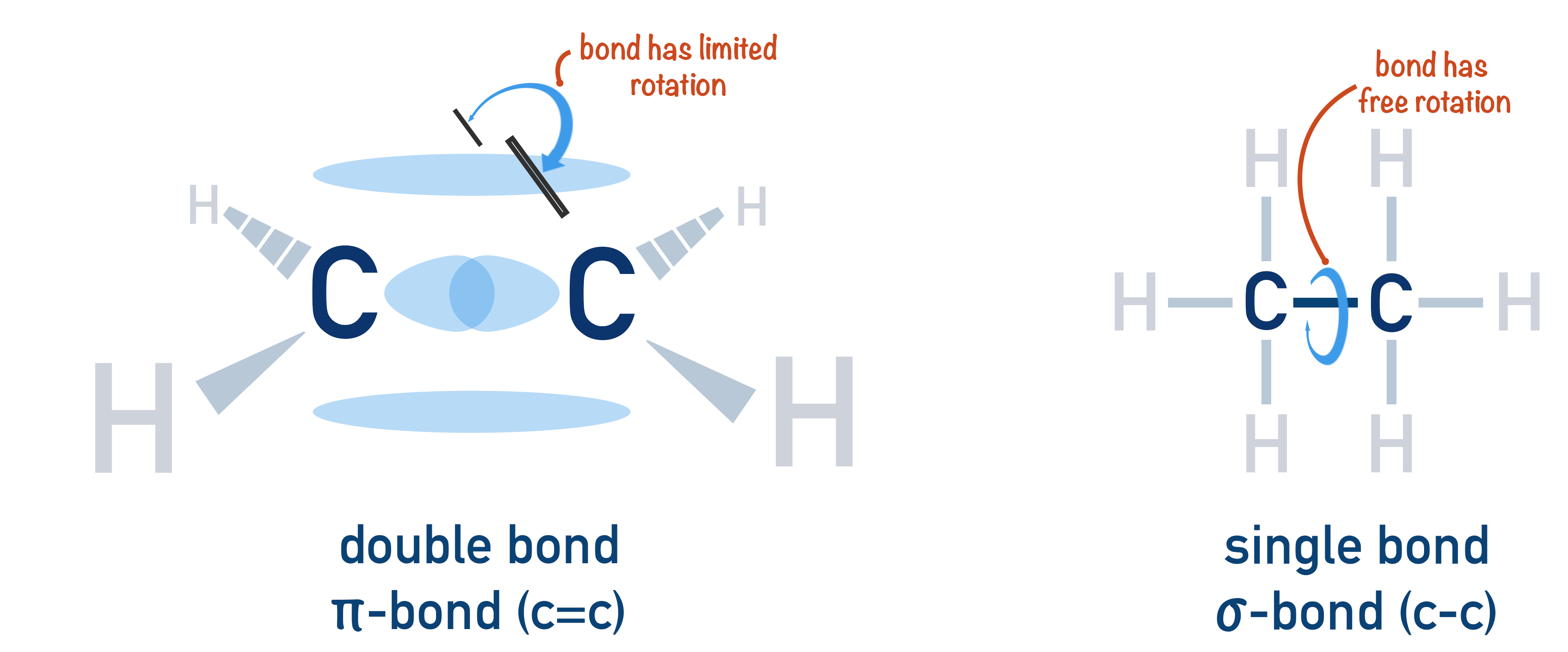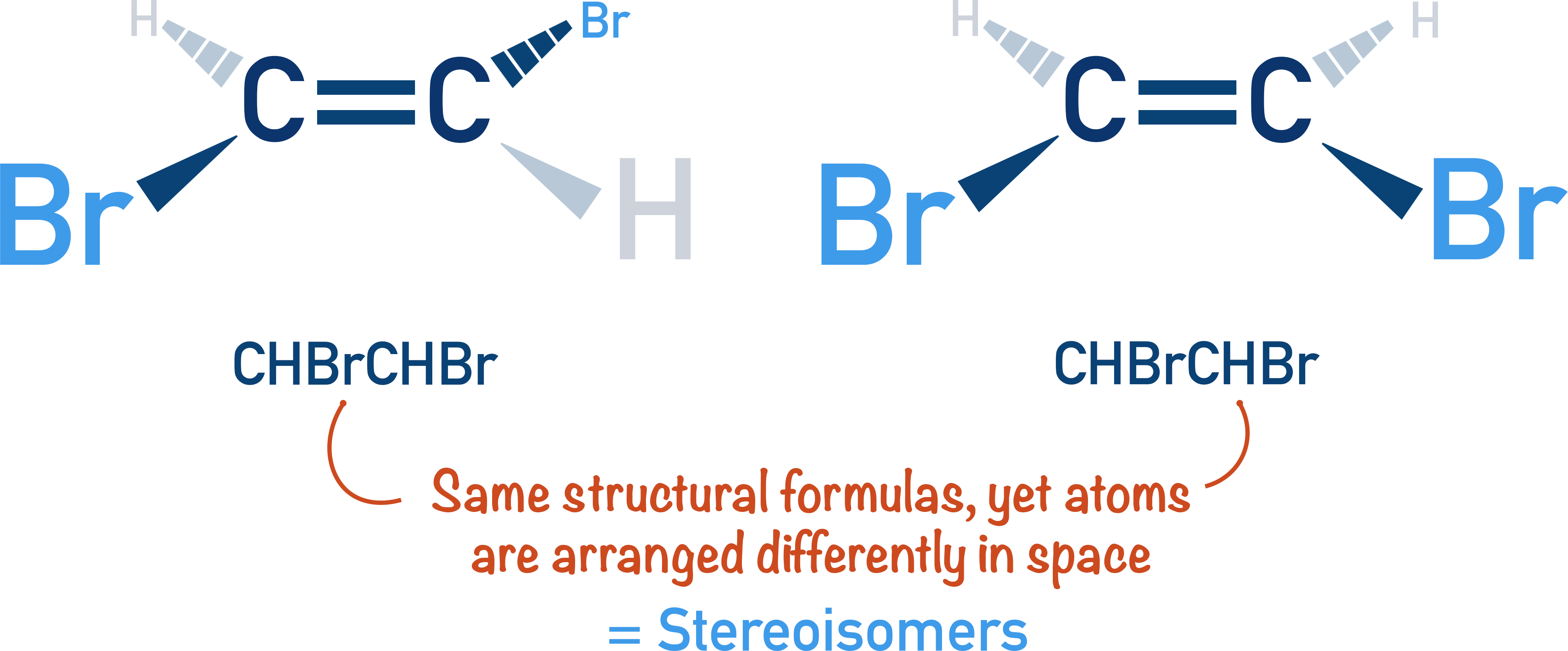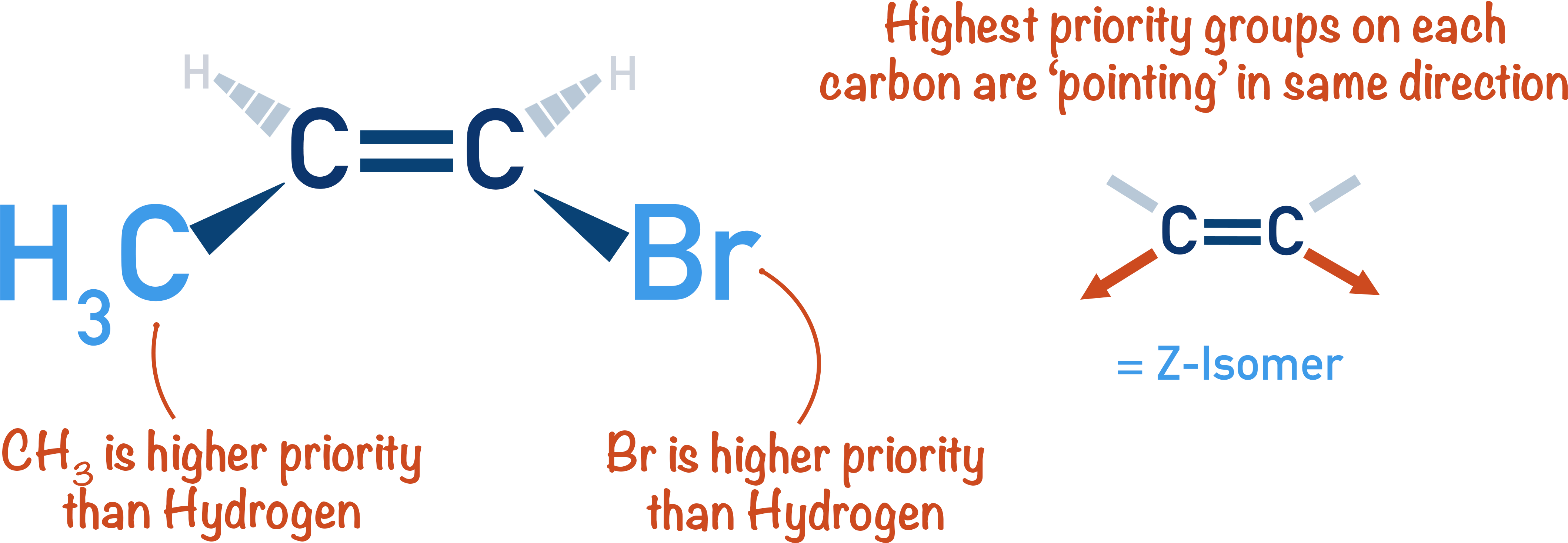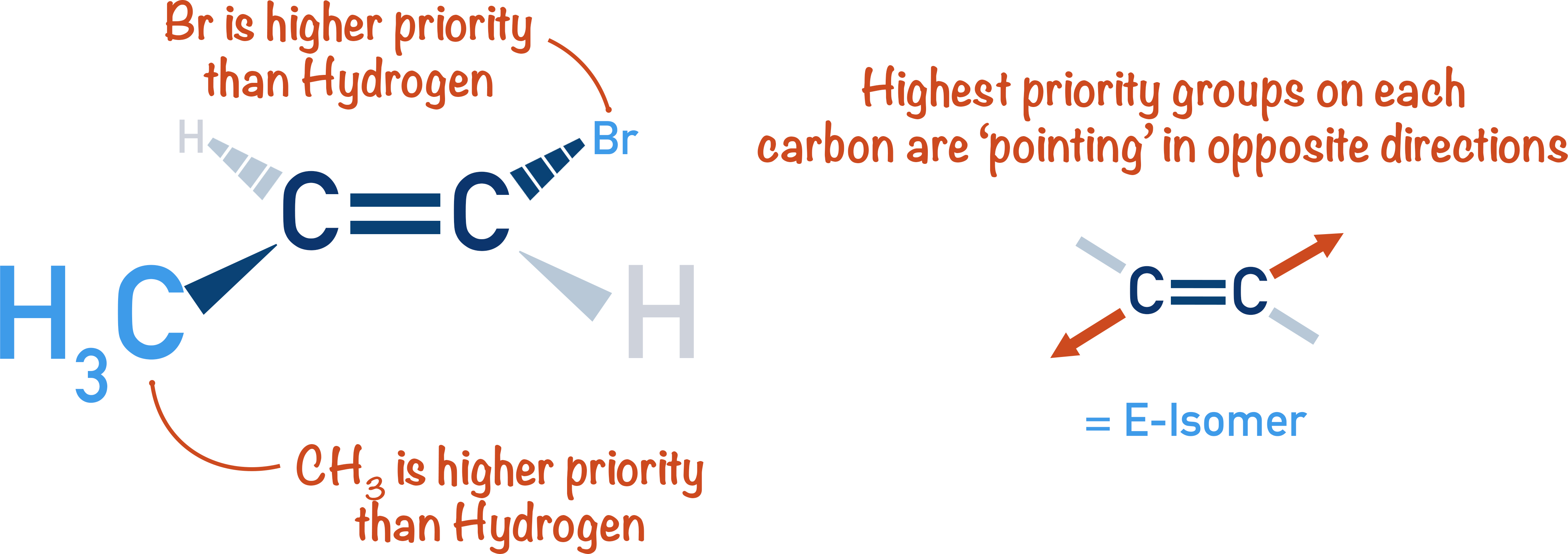Quick Notes Alkenes - Stereoisomerism
- Carbon-carbon double bonds are unable to rotate freely like single bonds do – they have restricted rotation.
- Groups or atoms bonded to carbon atoms in a double bond are ‘locked’ into position, and there are two possible ways they can be arranged.
- Stereoisomerism occurs when two molecules have the same molecular and structural formula, but atoms within the molecules are arranged in space differently.
- Z and E notation is used to name alkene based stereoisomers.
- In Z isomers, the highest priority groups bonded to each carbon in the double bond are pointing in the same direction.
- In E isomers, the highest priority groups bonded to each carbon in the double bond are pointing in opposite directions.
- Cis and trans isomers are forms of Z and E isomers (respectively), but both carbons in the double bond are bonded to the same type of groups.
Full Notes Alkenes - Stereoisomerism
A carbon-carbon double bond cannot rotate within a molecule like a single bond can, it has restricted rotation. If the double bond was to rotate, the merged p-orbitals creating a pi-bond would be placed under great strain and would eventually break – meaning a double bond no longer exists between the carbon atoms.

As a double bond cannot rotate, the three-dimensional structures of alkenes can differ depending on the groups bonded to each carbon in the double bond.
Molecules with the same molecular formula but different structures are called isomers. With alkenes, the structural formulas can be the same, but the atoms can be arranged differently in three-dimensions. Such molecules are called stereoisomers and exhibit stereoisomerism.

Z and E Isomers
As stereoisomers have different structures, they can behave differently as molecules. However, because they have the same structural and molecular formula we need to be able to distinguish between different stereoisomers of a compound! To do this, we use Z and E notation.
In order to name either a Z or E isomer, you have to prioritise the groups bonded to each carbon. If the highest priority group on both carbons ‘point’ in the same direction (see below), they are Z isomers. I remember this as Z=zame side. (It works for me!).
Note, we prioritise groups based on atomic number – with hydrogen (1) being the lowest priority.

If the highest priority group on both carbons point in opposite directions, they are E isomers.

To further confuse things, we can also assign a further description!
Cis and Trans
If all groups on both carbons are the same, we can use ‘cis’ and ‘trans’ as names.

Trans isomers have the same groups bonded to each carbon atom in the double bond, but they are on opposite sides.
Cis isomers have the same groups bonded to each carbon atom in the double bond, but they are on the same side.
One of the most confusing parts of this is that cis and trans are forms of Z and E (respectively) isomers, but Z and E isomers are not necessarily cis and trans isomers.
